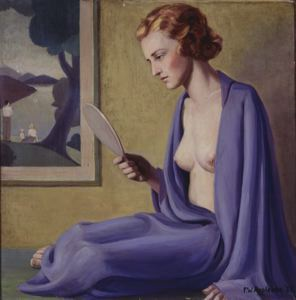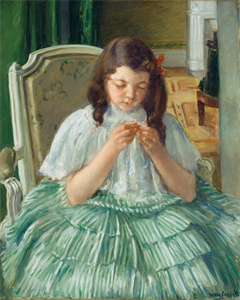
Frank Woodberry Applebee
American, 1902–1988
American, 1902–1988
Virginity
1935
Object Type:
Painting
Creation Place:
North America, American, Alabama
Dimensions:
30 1/8 in. x 30 1/8 in. (76.52 cm x 76.52 cm)
Medium and Support:
Oil on canvas
Accession Number:
1935.0021
Credit Line:
Gift of the artist
Keywords
Click a term to view the records with the same keyword
Portfolio List
Click a portfolio name to view all the objects in that portfolio
This object is a member of the following portfolios:
Your current search criteria is: Keyword is "HV" and [Object]Century is "Twentieth Century".

 by Artist (33)
by Artist (33)
